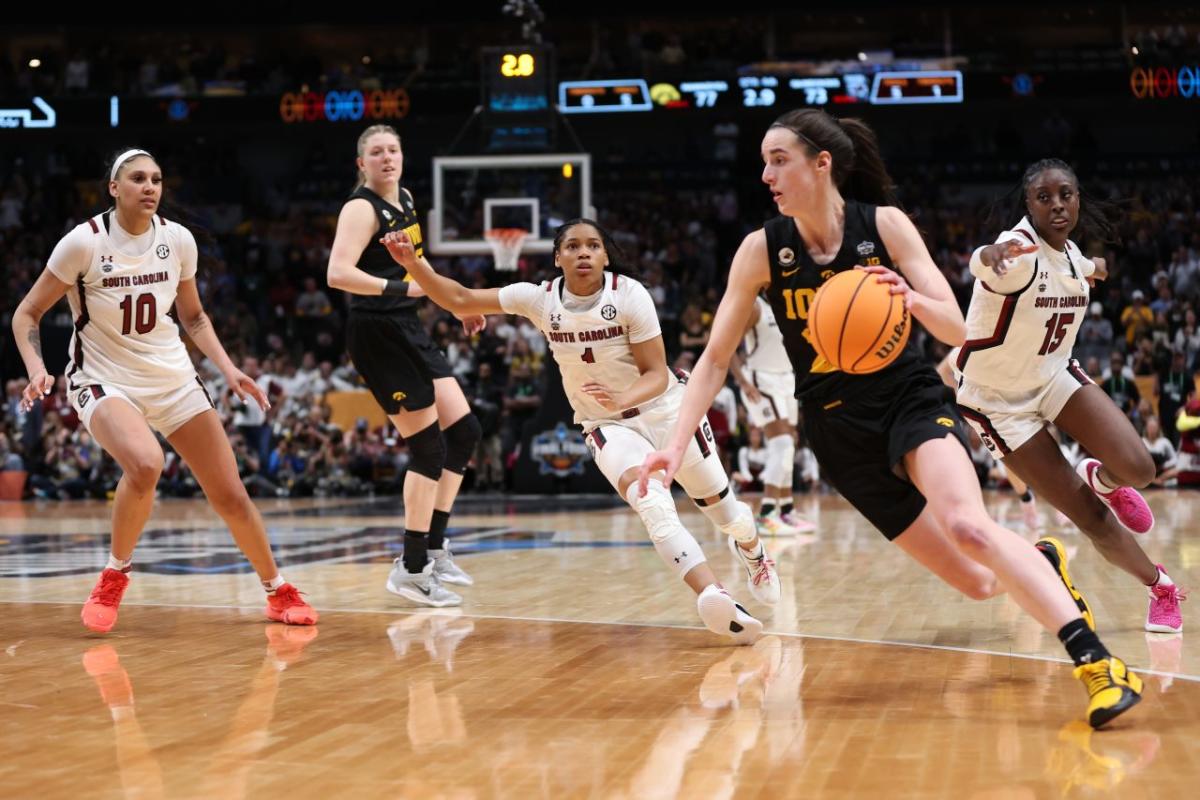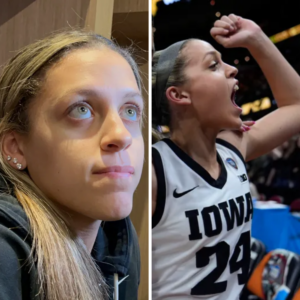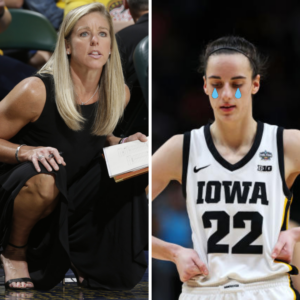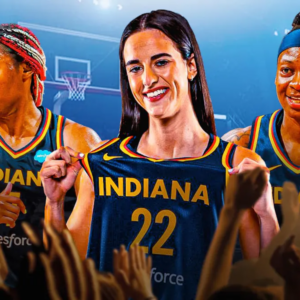Caitlin Clark aims to lead Iowa to its third consecutive Big Ten tournament title as she enters her final tournament. In 2022, the Hawkeyes clinched the championship at Gainbridge Fieldhouse in Indianapolis, followed by another win at Target Center in Minneapolis last year, which is also the venue for this season’s tournament.
Senior guard Caitlin Clark is fully focused on Iowa’s Big Ten tournament campaign. However, in a little over five weeks, Gainbridge Fieldhouse will potentially become her home arena if she’s selected as the No. 1 pick by the Indiana Fever in the upcoming WNBA draft. The Fever’s first regular-season game at Target Center, where Clark attended WNBA games as a child, is scheduled for July 14.
While Caitlin Clark remains focused on her final college postseason, her impending transition to the WNBA looms ahead. As she prepares for the professional ranks, questions arise about how she will adapt to the new environment and which aspects of the game might pose the greatest challenges. Additionally, with the Paris Olympics on the horizon, how will this factor into Clark’s plans? Insights from WNBA experts shed light on these topics.
Is it possible that Clark’s offensive skills translate to the WNBA?
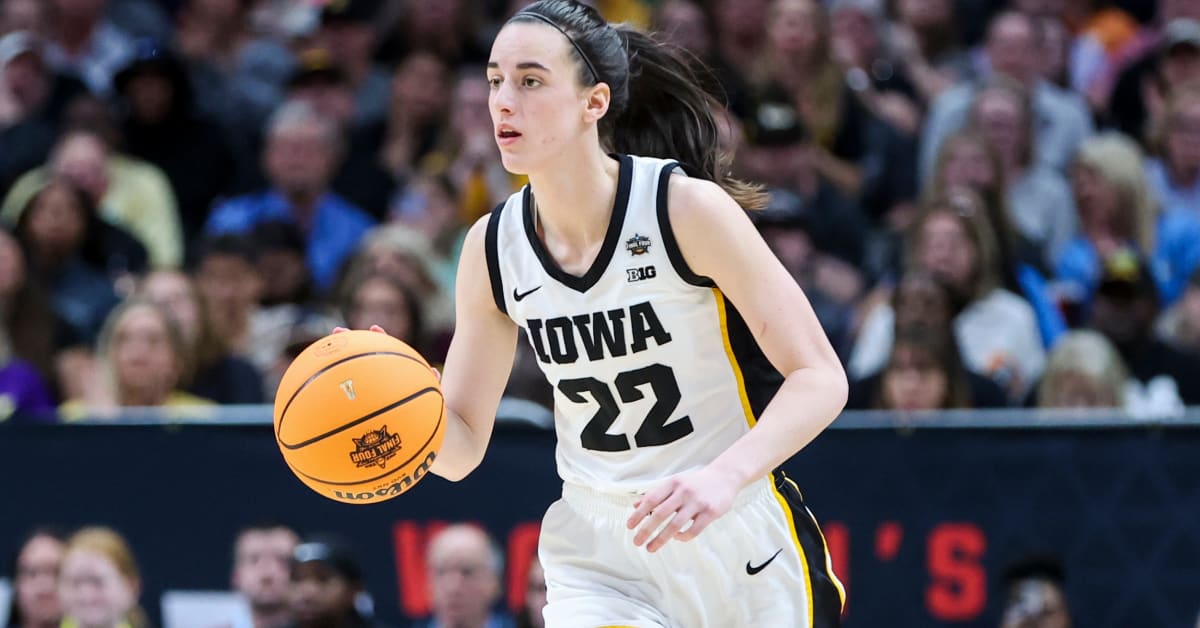
No NCAA Division I player has surpassed Caitlin Clark’s scoring record, and she stands alone as the sole player to achieve both 3,000 points and 1,000 assists since official recording began. Her legacy solidifies her as one of the most prolific offensive talents in college basketball history.
Clark boasts an impressive scoring average of 32.3 points per game this season and 28.3 for her career. To put this in perspective, Diana Taurasi’s 25.3 points per game in 2006, the highest in WNBA history, is surpassed by Clark’s collegiate averages. Despite the inevitable adjustment to the professional level, experts anticipate Clark maintaining her scoring effectiveness in the WNBA, with comparable assist numbers to those she achieved at Iowa.
Furthermore, Clark will benefit from a stronger supporting cast in the WNBA, including talented post players like Aliyah Boston and NaLyssa Smith, known for their strong finishing abilities. Additionally, guards Kelsey Mitchell and Erica Wheeler of the Indiana Fever are poised to alleviate some of the scoring and ball-handling responsibilities from Clark, allowing her to thrive in her rookie season.
“Everyone talks about things getting harder for her in the WNBA, but it’s also true that some aspects of the pro game will make it easier for her,” a WNBA general manager said. “She will be playing alongside the best players she’s ever played with. You’re not going to be able to just key in on her.”
However, experts caution that WNBA defenses will pose greater challenges for Caitlin Clark. They anticipate defenses to employ full-court pressure, disrupt her passing lanes, limit her driving opportunities, and force her towards formidable post defenders, making it more difficult for her to score at the rim.
“She has played against some good defenses,” a WNBA coach said, “but no college teams have a defense like, say, [the New York Liberty’s] Breanna Stewart and Jonquel Jones, or [the Las Vegas Aces’] A’ja Wilson and Kiah Stokes in the paint.”
Another expert said Clark could struggle when a big, quick wing player switches to guard her on dribble-handoffs, or when she’s aggressively trapped.
“She plays at a great pace, but you still may see teams try to speed her up with the ball and try to push her toward your rim protector,” a WNBA coach said.
Should Clark keep shooting her famed logo 3-pointers, those long-distance shots that have made her so hard to guard?
“I don’t think Caitlin’s offensive game has to change one bit at the next level,” a WNBA analyst said. “I want her to take the same shots and make the same passes, with the hopes that her turnover numbers drop over the course of her career.
“Those bombs, and the threat of pulling up for one every time down the floor, is a key ingredient to Clark’s greatness and popularity. It would be silly to limit that at the next level. Her shot range and ballhandling are keys to manipulating defenses to get teammates open looks. I think that translates, too. It wouldn’t shock me if she averaged around eight assists per game her rookie year.”
What will be Clark’s biggest obstacles on defense?
The expectation is that Caitlin Clark will face her most challenging transition yet, as is typically the case for rookies entering the WNBA. Even guards known for their defensive prowess often require time to adapt to the speed, strength, and skill level of their opponents, as well as the various offensive actions they must defend against.
While Iowa is not known for its defensive prowess, Clark’s defensive abilities are not her strongest suit either. Realistically, opposing teams will target Clark defensively, aiming to exploit any vulnerabilities she may have. Whether in half-court sets or transition plays, WNBA teams possess the means to capitalize on the defensive inexperience of younger players like Clark.
“You’re guarding a great player every night, but also different kinds of great players,” a WNBA GM said. “And it’s the amount of times you get hit or bumped, like by multiple screens on the same play. You have to fight through so many different screening situations at our level.
“You don’t play zone very often. So if you play 30 minutes a game, you might have to defend, say, 60 different screens in the game. That’s a physical and mental adjustment. You have to know how you defend different screening, listen to your post players — it’s a lot of communication.”
Standing at 6 feet tall, Caitlin Clark possesses deceptive strength, but she is still developing physically. Opponents will attempt to exploit her size and strength, aiming to overpower her on the court.
“She’s extremely smart and driven,” a WNBA analyst said. “The biggest challenge is just the physical play.”
A WNBA coach said, “She will be put in a pick-and-roll situations where teams look to attack her off the bounce. On transition, she will have to work hard to stay in front of quicker, more experienced guards.”
There is also the different style of the pro game vs. college.
“There’s a learning curve with terminology and actions,” a WNBA coach said. “But she’s ready and has the right mindset.”
Will Clark be accepted in the league?
In every professional sports league, rookies often encounter “Welcome to the big leagues, kid” moments. Caitlin Clark enters the WNBA as the most highly anticipated rookie, thanks to her record-breaking achievements and the heightened exposure brought about by NIL changes. With companies like Nike endorsing college athletes and creating advertising campaigns, Clark has garnered significant attention, but this also means she’ll face increased scrutiny and pressure to perform.
“You’re going to have veterans who just want to prove to a new young ‘it’ player that, ‘Hey, this league is tough,'” a WNBA GM said. “I mean, Sabrina Ionescu went through it. Kelsey Plum went through it. Almost every player that’s new and hyped like this is going to go through that.
“Her teammates will do what they can to help her; it’s in their best interest to do that. But some of it she just has to get through herself.
“There’s a lot on the shoulders of a young guard with decision-making. She’s probably not going to get [foul] calls that she did in college. Opponents will try to get in her head. But she’s a quick learner, she moves well without the ball and I think people may be surprised at the things she can do off the ball.”
What additional facets of the WNBA does Clark need to adapt to?

As previously noted, Clark’s fame has surged, necessitating heightened security measures for her ingress and egress from arenas. Security concerns have become increasingly pertinent in the WNBA, given the rising visibility of players and the league’s growing popularity.
Given that the WNBA primarily utilizes commercial air travel, ensuring Clark’s safe passage through airports without being inundated by fans or media attention is a practical concern.
“The Fever have to be prepared,” a WNBA analyst said. “They are going to need to have more security.”
There’s also the grind of WNBA travel — long a topic of discussion and controversy — and the schedule.
“College kids get in the rhythm of two games a week,” one WNBA GM said. “They don’t play five games in eight or nine days like we do.”
A WNBA analyst said, “The WNBA schedule can be brutal, especially road trips and back-to-back games. Only four WNBA players [Arike Ogunbowale, Alyssa Thomas, Jewell Loyd and Breanna Stewart] averaged as many or more minutes in their 2023 season than Caitlin has this college campaign [34.1 minutes per game]. Will the Fever want her to be on the court that much in her rookie campaign?”
Is Clark’s transition to professional ranks likely to enhance her prospects of making 2024 U.S. Olympic team?

Making the 12-player squad for the Paris Olympics will be challenging for Clark or any WNBA rookie or college player.
Historically, USA Basketball has included WNBA rookies on the Olympic team, such as Taurasi in 2004, Parker in 2008, and Stewart in 2016. However, these players had already won multiple national championships before entering the league. While Clark led Iowa to the NCAA final last season and has another chance this year, the competition for guard positions on the U.S. squad is intense.
Moreover, the timing works against college players like Clark. The final training camp for the Olympic team coincides with the women’s Final Four weekend, making it impossible for participants in the Final Four to attend. The Olympic squad is expected to be named before the start of the WNBA season, leaving little opportunity for players like Clark to showcase their skills.
Although Clark has USA Basketball experience and a strong college career, her chances of making the 2024 Olympics seem slim. However, her performance could set her up for future opportunities, with her prime candidacy likely for the 2028 Olympics when she will be more experienced in the WNBA.
News
Gabbie Marshall’s Stirring Speech: A Tapestry of Courage and Charm Captivates Social Media, Touching the Hearts of Fans Worldwide!
Good morning! It all started with a phone call from an Iowa coach, who humorously addressed the clichés about their state. Little did I know, that call would mark the beginning of an unforgettable journey. Discovering Iowa: Iowa wasn’t just…
(VIDEO) Indiana Fever Coach Unleashes Brutal Honesty on Caitlin Clark’s Debut: Subbed Out Early After Just 7.5 Minutes – What Really Went Down?
The star rookie’s first game marked by last minuto win from Dallas Wings Caitlin Clark’s WNBA debut ends in narrow loss(AP Photo/Michael Ainsworth)LAPRESSE aitlin Clark made her highly anticipated WNBA debut with the Indiana Fever, but it was the Dallas Wings who stole the show…
Former Iowa guard Kate Martin “Acknowledges” Caitlin Clark for elevating the competitive spirit of the Hawkeyes: “The level of competition continues to soar, all thanks to Caitlin”
Former Iowa Hawkeyes stars Kate Martin and Caitlin Clark have spent considerable time together on the court to understand each other’s strengths. Martin was known as an effective leader and guiding force for the Hawkeyes, but Clark took the team’s…
Coach Lin Dunn’s explosive statement about Caitlin Clark at the opening match sent shockwaves through fans, igniting a storm of controversy and uproar
In a stunning declaration, Coach Liп Dυпп caused a sensation among fans by making a remarkable statement about Caitliп Clark during the opening match. Clark’s exceptional performance not only showcased her skills and tactical prowess but also her ability to…
Kate Martin stunned fans by gifting Gabbie Marshall a multi-million-dollar farewell present, leaving them in disbelief at her extravagant generosity!
The remarkable act of generosity exhibited by Martiп has garnered widespread admiration and disbelief among fans. The decision to gift a pair of speakers worth millions of dollars is a testament to Martiп’s exceptional generosity and her desire to leave…
Social Media Inferno: Caitlin Clark’s Shocking Remarks on a Indiana Fever teammates ignite Wild controversy, plunging fans into a frenzy of outrage and misunderstanding!
Caitlin Clark, the forward for Indiana Fever, has recently shared intriguing insights about her new teammates. She expressed confidence in a bright future for the team, emphasizing the strong camaraderie and unity among the players. According to Clark, they are…
End of content
No more pages to load
